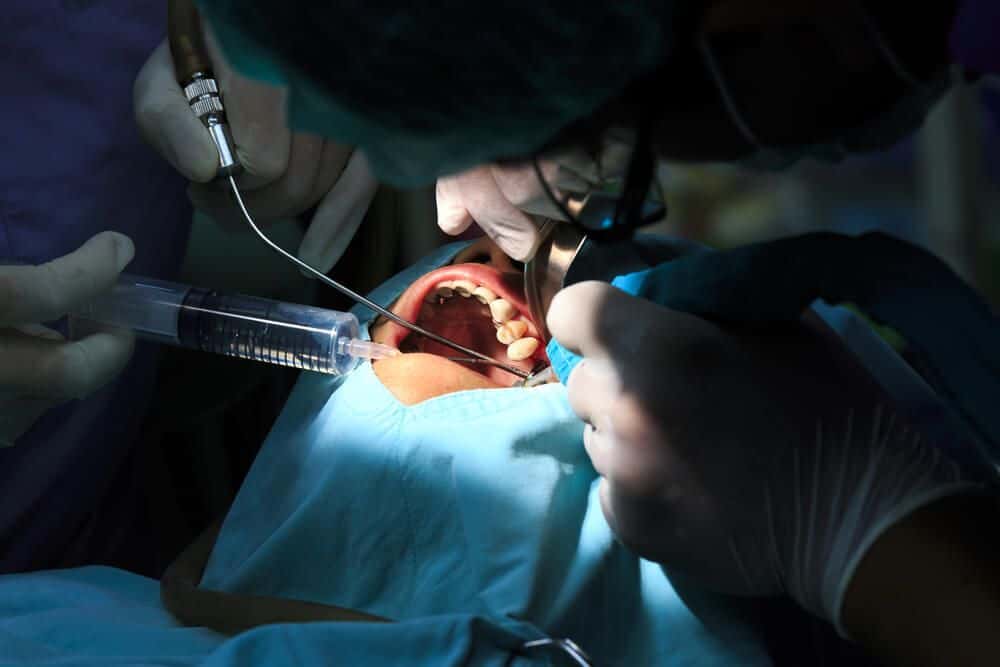General Dentist Fails to Diagnose Impacted Tooth and Absess
Updated on
This dental medicine case involves a female patient who appeared at the office of her general dentist in Vermont complaining of a toothache with swelling and pain in her right jaw. The dentist examined the patient in a perfunctory way, feeling the side of her face. The dentist told her that her tooth was not abscessed, and prescribed some pain medication and a muscle relaxer. No antibiotics were discussed or prescribed nor were x-rays taken. When she got home, the patient took the medications as prescribed. Shortly thereafter, the patient became sick and vomited. The patient continued to feel ill and called the dentist’s office again after-hours, left a message on the answering machine but never received a return call. The next day, the patient collapsed. She was taken by ambulance to a Medical Center and was admitted. X-rays revealed an impacted tooth and an abscess; an infection in the patient’s jaw had spread and she was septic.The patient is permanently injured, and portions of her jaw had to be removed.
Question(s) For Expert Witness
1. Please discuss your background in oral surgery in both a clinical and legal setting.
2. Have you been practicing in a private clinical setting since 2010? Do you still actively treat patients?
3. Given the patient's symptoms in the case summary, would it have been beneficial for the patient to have been referred for an X-ray as well as an oral surgery specialist?
Expert Witness Response E-007792
 I am an oral medicine / oral pathology specialist with over 25 years of clinical and teaching experience in the diagnosis and treatment of acute dental emergencies such as the one in this case. While I am full-time faculty at a dental school, I actively treat patients and have been doing so since 1986. I have practiced in a private, university affiliated setting since 1990 and continue to do so. The patients I see at the practice are private patients. An Intraoral radiograph (X-ray) would not be possible in the case described here. A pantographic (panographic, Panorex) radiograph should have been take due to the patient only being able to open his mouth about a quarter of an inch. Based upon the signs and symptoms that the patient presented with, a referral to an oral surgeon would have been prudent if the defendant was not qualified to treat a dental emergency of this type and severity. I am a Tenured Professor of Oral Diagnosis and Oral Medicine at a major university, where I also serve as course director. Additionally, I am Director of the Dental Emergency and Admissions Clinic.
I am an oral medicine / oral pathology specialist with over 25 years of clinical and teaching experience in the diagnosis and treatment of acute dental emergencies such as the one in this case. While I am full-time faculty at a dental school, I actively treat patients and have been doing so since 1986. I have practiced in a private, university affiliated setting since 1990 and continue to do so. The patients I see at the practice are private patients. An Intraoral radiograph (X-ray) would not be possible in the case described here. A pantographic (panographic, Panorex) radiograph should have been take due to the patient only being able to open his mouth about a quarter of an inch. Based upon the signs and symptoms that the patient presented with, a referral to an oral surgeon would have been prudent if the defendant was not qualified to treat a dental emergency of this type and severity. I am a Tenured Professor of Oral Diagnosis and Oral Medicine at a major university, where I also serve as course director. Additionally, I am Director of the Dental Emergency and Admissions Clinic.
About the author
Joseph O'Neill
Joe has extensive experience in online journalism and technical writing across a range of legal topics, including personal injury, meidcal malpractice, mass torts, consumer litigation, commercial litigation, and more. Joe spent close to six years working at Expert Institute, finishing up his role here as Director of Marketing. He has considerable knowledge across an array of legal topics pertaining to expert witnesses. Currently, Joe servces as Owner and Demand Generation Consultant at LightSail Consulting.
Subscribe to our newsletter
Join our newsletter to stay up to date on legal news, insights and product updates from Expert Institute.
Sign up nowFind an expert witness near you
What State is your case in?
Subscribe to our newsletter
Join our newsletter to stay up to date on legal news, insights and product updates from Expert Institute.



